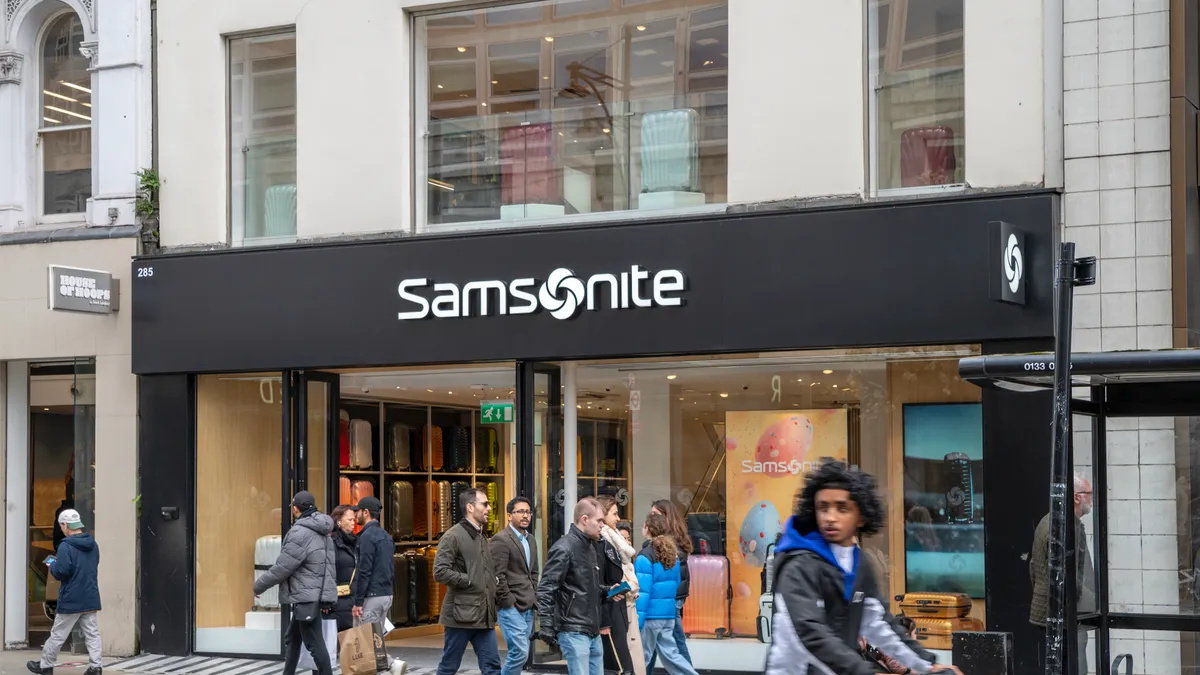Dive Brief:
- Samsonite International announced Monday it has committed to a slate of new sustainability goals in line with criteria laid out by the Science Based Targets initiative.
- The luggage company committed to rely on 100% renewable electricity to power its operations and increase the use of recycled materials in its products to reduce scope 3 emissions from its purchased goods and services by 52% by 2030, compared to a 2022 baseline, according to a press release.
- The new targets build on the company’s broader ESG strategy, which includes a goal to achieve carbon neutrality across all operations by 2025.
Dive Insight:
The global luggage manufacturer and retailer said the new science-based climate targets will apply to all the company’s brands, which include its namesake Samsonite, Tumi, American Tourister, Lipault, Hartmann and others. Samsonite said it submitted its goals to SBTi for formal validation in October.
Samsonite said over 95% of its total greenhouse gas emissions originate from its supply chain — falling under the category of scope 3 — and almost 80% of emissions came from purchased goods and services, which include raw materials used for the internal manufacturing of products. Hence, to lower its carbon footprint and hit its near-term climate goals, the company said it will focus on reducing material-related emissions across its supply chain. It will look to achieve that by ramping up recycled content of materials such as plastics and aluminum, which are used to manufacture and assemble its products.
“We are partnering with our suppliers to significantly expand the use of recycled, lower-carbon materials while maintaining our long-standing commitment to durability,” Samsonite’s CEO Kyle Gendreau said in the Nov. 4 release.
Samsonite said it has devised “GHG emissions reduction roadmaps,” which lay out specific actions the company would have to take to reach these targets by 2030.
In its latest ESG report released earlier this year, the company said around 34% of its net sales in 2023 came from products that were made at least in part from recycled materials, up from about 23% in 2022.
The report also said the company had hit its goal of using 100% renewable electricity across all its operations two years ahead of its 2025 target date. Samsonite said this purchase of renewable electricity also helped decrease its scope 1 and scope 2 emissions by 85% compared to a 2017 baseline.
To stay aligned with its SBTi-aligned goals, the company said it aims to maintain its use of 100% renewable electricity across its retail stores, manufacturing and distribution facilities and offices. Samsonite plans to achieve this through a mix of onsite solar power generation, participation in utility and municipal green power programs, and purchase of Renewable Energy Certifications and Energy Attribution Certificates, according to the release.











